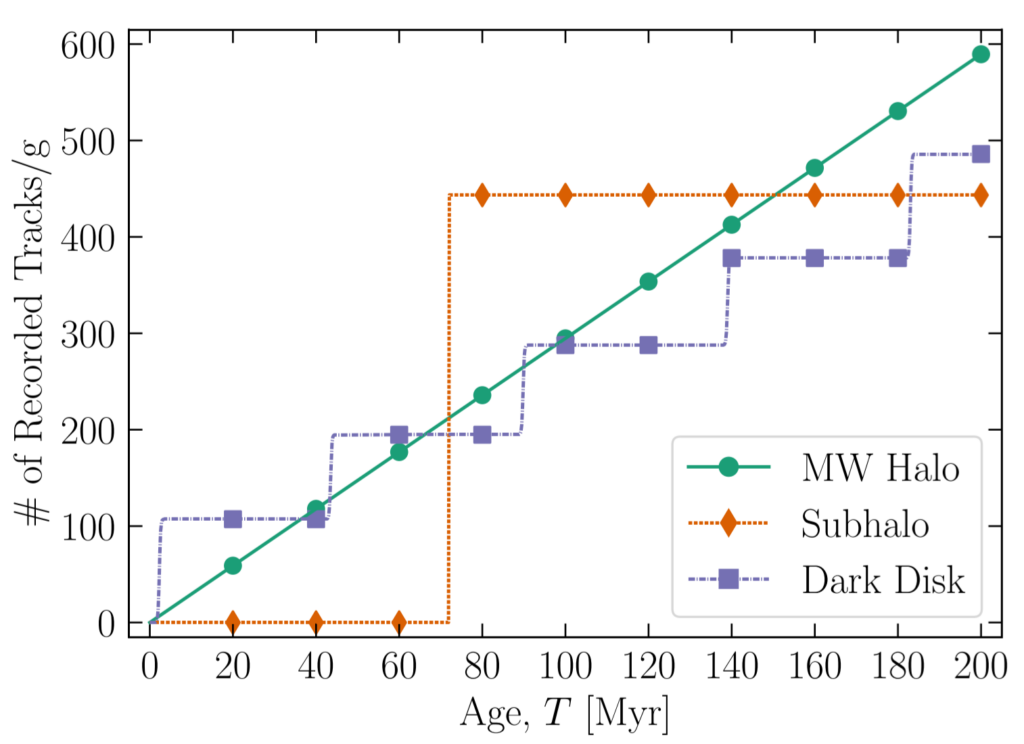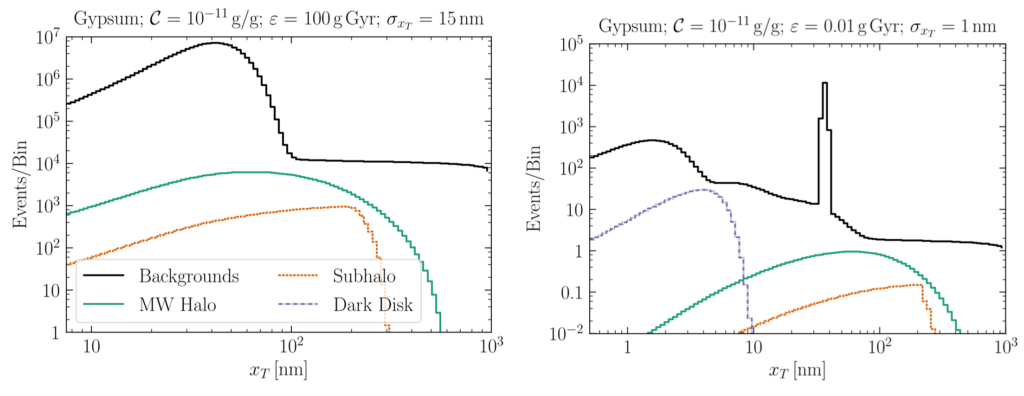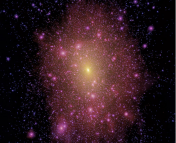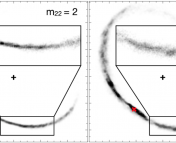Title: “Galactic Geology: Probing Time-Varying Dark Matter Signals with Paleo-Detectors”
Authors: Sebastian Baum, William DeRocco, Thomas D. P. Edwards, and Saarik Kalia
First Author’s Institution: Stanford Institute for Theoretical Physics, Stanford University, Stanford, CA 94305, USA
Status: open access on arXiv
Paleo-detectors: the tools of galactic geology
For thousands of years, humans have looked to rocks and minerals as windows into our past: paleontologists have interpreted the fossil record to deduce the history of life on Earth; geologists have analyzed radioactive isotopes and subtle patterns in rock formations to reconstruct the history of the planet itself; and now, astrophysicists are studying minerals of millions to billions of years old to unveil the history of our Galaxy.
When a particle of astrophysical origin — say, a particle of dark matter or a neutrino from a nearby supernova — passes through the Earth, it should interact with atoms in the crystal lattices of naturally-occurring minerals; as the particle jostles these atoms, the recoiling nuclei leave permanent “damage tracks” in the bulk of the mineral on nanometer scales. By examining these tracks using powerful microscopes and tallying up the frequencies of different track lengths, one can infer the complete history of particle interactions within a given mineral sample. These minerals have thus been dubbed paleo-detectors.
The fossilized signatures of dark matter
While paleo-detectors have a remarkably rich spectrum of applications, today’s paper focuses specifically on the feasibility of detecting time-varying dark matter signals. Since dark matter is expected to interact extremely weakly with luminous matter, dark matter is notoriously difficult to detect directly; our only evidence for dark matter comes from indirectly observing its gravitational influence on visible matter. Paleo-detectors, however, may prove to be exceptionally effective direct detectors of dark matter: as long as a mineral remains crystallized, it is susceptible to interactions with dark matter, thus enabling “data collection” over exposure times reaching significant fractions of the age of the Earth. Moreover, by examining a collection of paleo-detectors of different ages, one can determine how the underlying dark matter signal varies with time.
To examine the sensitivity of paleo-detectors to time-varying dark matter signals, the authors consider two scenarios of particular interest to the dark matter community: (1) the presence of a dark matter disk coplanar with the Milky Way’s disk; and (2) the presence of dark matter subhalos along the trajectory of our Solar System. If some component of dark matter were able to dissipate energy (either through collisions or some type of “dark radiation”), we would expect a chunk of the dark matter permeating the Milky Way to collapse into a dark disk. Since the Solar System crosses the Galactic plane about once every 45 million years, a dark disk would imprint its signature on a paleo-detector at discrete 45 Myr intervals. The presence of dark matter subhalos, on the other hand, is a consequence of the cold dark matter model, in which dark matter does not dissipate energy; since a subhalo is effectively a compact clump of dark matter floating about the Milky Way, if the Solar System were to pass through such a halo, a paleo-detector would pick up a single strong signal due to the transient dark matter interactions.
Given that a dark disk and a subhalo would produce distinct patterns in paleo-detectors, these detectors should be able to discriminate between the two dark matter models. Figure 1 illustrates the two time-varying signals (plus the smooth signal from the Milky Way halo) as the number of recorded tracks in a gram-sized paleo-detector vs. detector age. By utilizing paleo-detectors of distinct ages, a multi-detector experiment should be able to interpolate and reconstruct the disk and subhalo signals shown in Figure 1.

The viability of paleo-detectors
As with any instrument, paleo-detectors are sensitive to background noise. For a paleo-detector, anything that can interact with the nuclei in the mineral’s lattice could contaminate the desired signal; these backgrounds include neutrinos from the Sun, from the Earth’s atmosphere, and from supernovae, alpha particles from the decay chain of uranium-238, and fast neutrons from the spontaneous fission of nuclei. Luckily, some of these backgrounds can be suppressed by careful choice of minerals. Still, however, these backgrounds significantly contribute to the total paleo-detector signal, as shown in the track-length spectra of Figure 2. The backgrounds (and the dark matter signals themselves) can also be tuned by varying the detector resolution (i.e., the smallest detectable track length) and exposure (i.e., the mass of the detector sample multiplied by the exposure time), as illustrated by the differences in the two panels of Figure 2.

Thus, with analytical and numerical models of the backgrounds, of the Milky Way halo, and of the time-varying dark disk and subhalo signals in hand, the authors perform a statistical analysis over a wide range of experimental realizations to determine under which conditions a paleo-detector experiment would yield a significant detection of a time-varying signal. The authors find that paleo-detectors are remarkably robust, even in the presence of large uncertainties on model parameters and on the models themselves. In fact, for a time-varying signal to be detected, it’s not even necessary to constrain the ages of the detectors; as long as an experiment uses at least two detectors of sufficiently different age, the experiment can separate out the time-varying from the time-invariant signals. With just two detectors, a paleo-detector experiment could probe a dark disk to higher precision than current astrometric measurements. Similarly, for subhalos that pass the Milky Way at greater than roughly 200 km/s, paleo-detector experiments could probe subhalo properties in previously unexplored mass ranges.
While today’s paper focused on only two science cases for paleo-detectors — namely, dark disks and subhalos — the framework developed in this paper can be applied to any time-varying signals. As such, paleo-detectors could prove essential for not only dark matter research, but also for work on solar neutrinos, Galactic supernovae, and cosmic rays. To borrow the words of William Blake, these paleo-detectors will truly allow us to see a galaxy in a grain of sand.
Astrobite edited by: Ishan Mishra
Featured image credit: Stanford structural geology and tectonics research group




